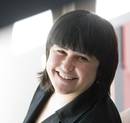Seed Keepers
The most spectacular, the most media, is probably the World Seed Chamber. It is located on the Norwegian islands of Svalbard, almost on the North Pole, where they receive and store growing seeds from all over the world. Cold and loneliness are ideal for the conservation of seeds, which is fundamental since it works as a backup of the rest of stores. More than 830,000 samples have been collected today under the island's permafrost, with capacity for 4.5 million varieties.
In addition to crop varieties, global seed banks also collect wild species. This conserves plant biodiversity and guarantees the diversity of basic crops for human food. In fact, humans base much of the food supply on a few crops and varieties; if we had only these varieties, we would be extremely vulnerable to diseases and pests. Therefore, seed banks play a very practical role, keeping diversity in a way of crop improvement.
In this issue we have approached some of these deposits, both local and remote, large and small, to know the seed guards and how they work. Joseba Garmendia, Andreas Ebert, Jose Ignacio Ruiz de Galarreta and Luigi Guarino led us the XXI. through the dependent warehouses.
Next to them we brought to the inner pages a fifth vigilante: Russian pioneer Nikolai Vavilov. XX. In the early 20th century it brought together the largest collection of seeds of the time after twenty years of travel through Europe, Asia, Africa and America. He wanted to find the basasenides of all the plants used in agriculture and dreamed of ending hunger. But Stalin's regime and World War II made his dream a nightmare. Vavilov's story was a tragic exponent of the strategic importance of seeds.






